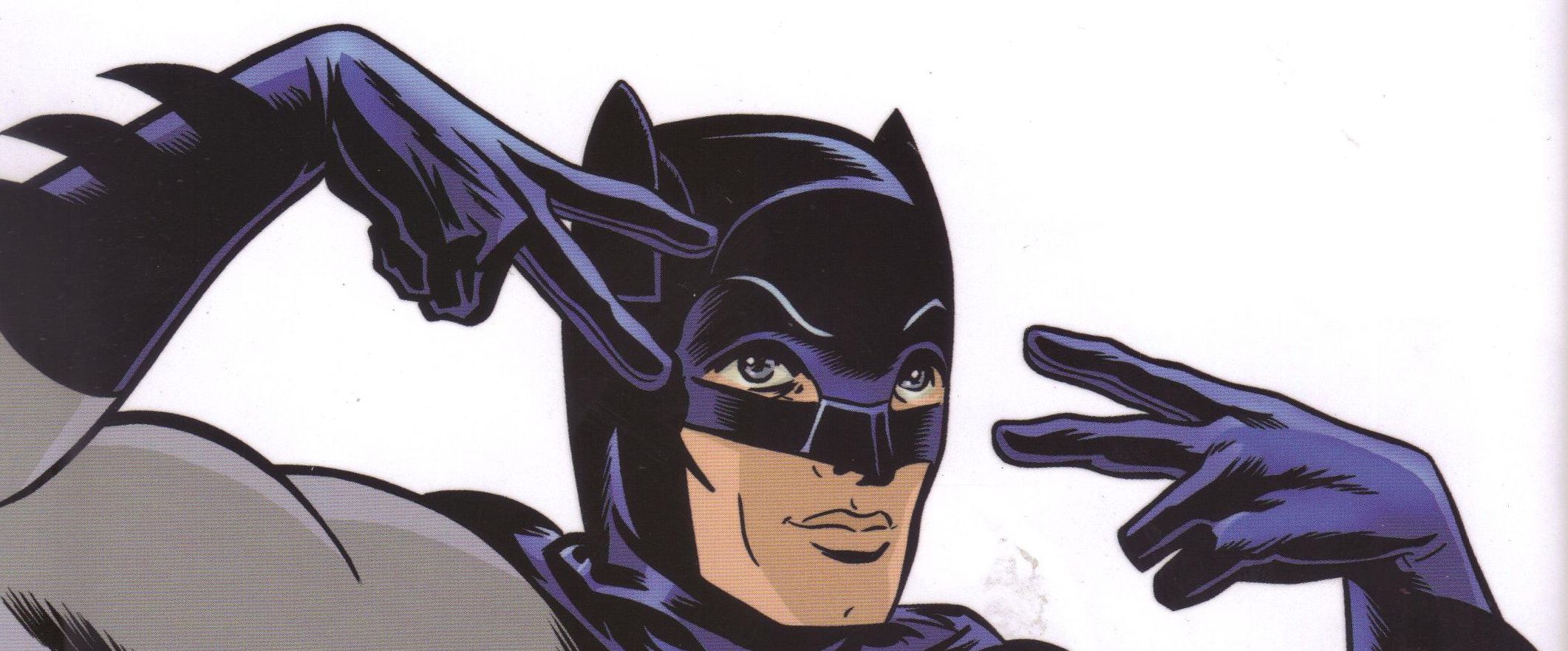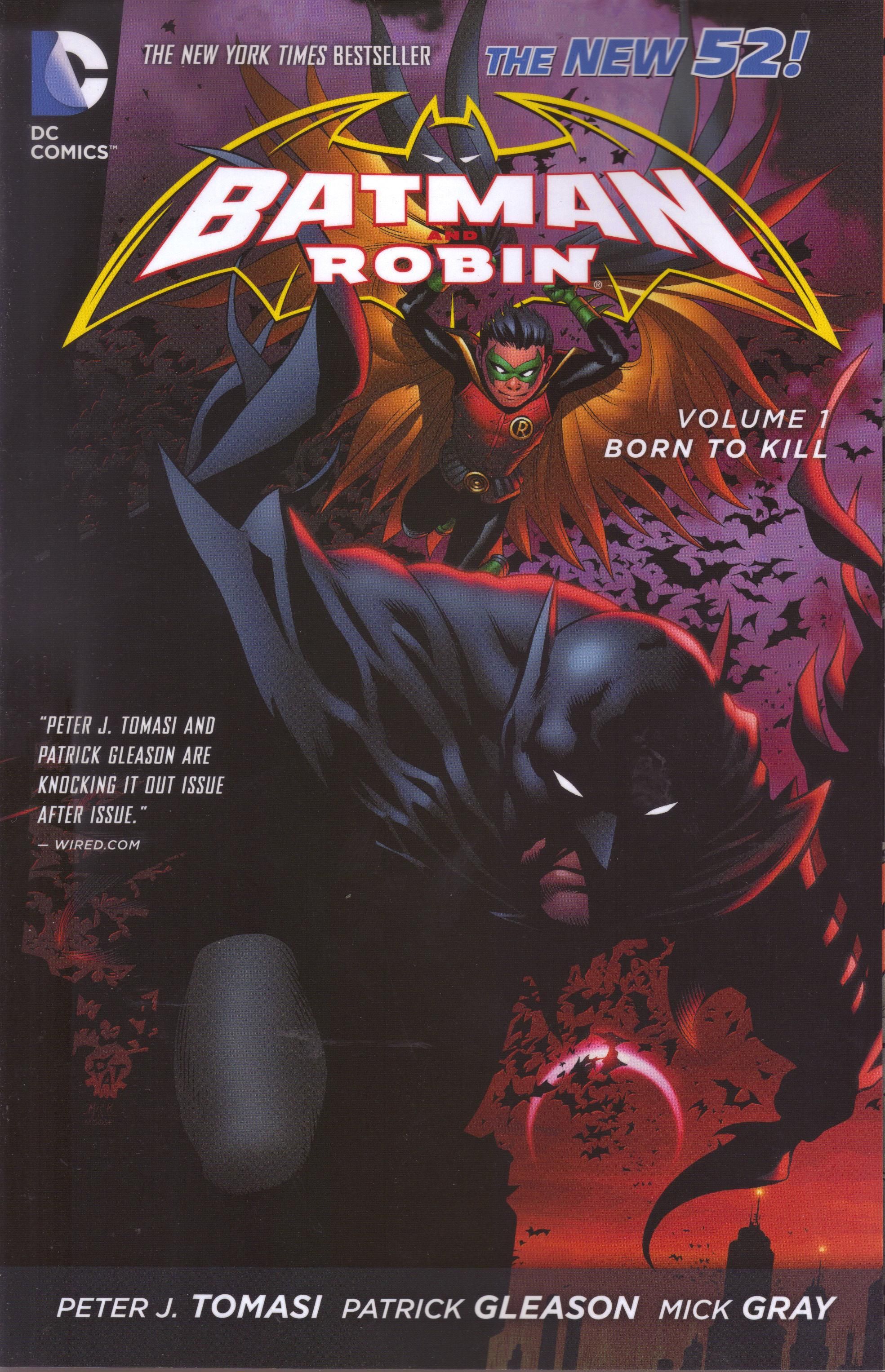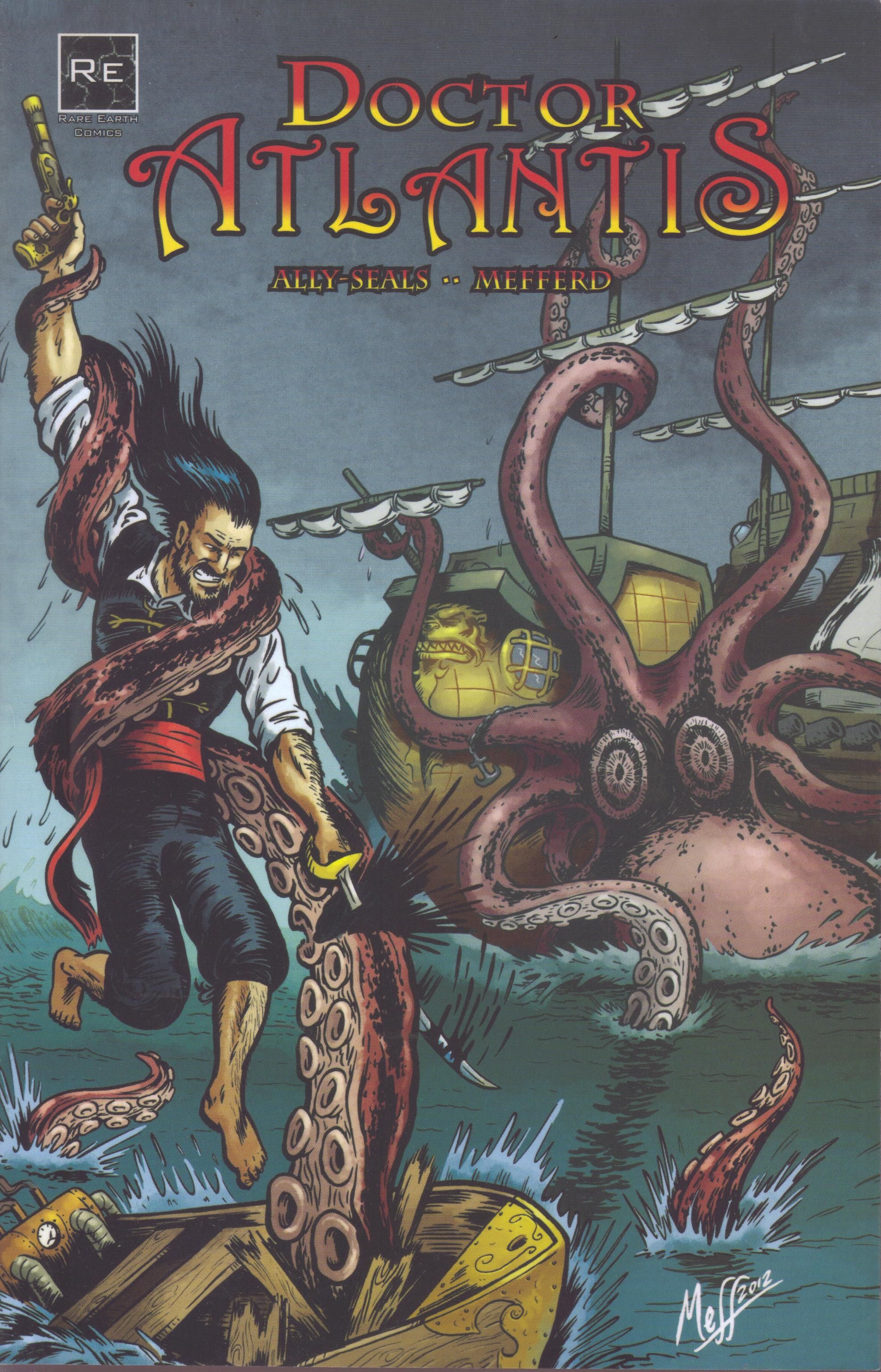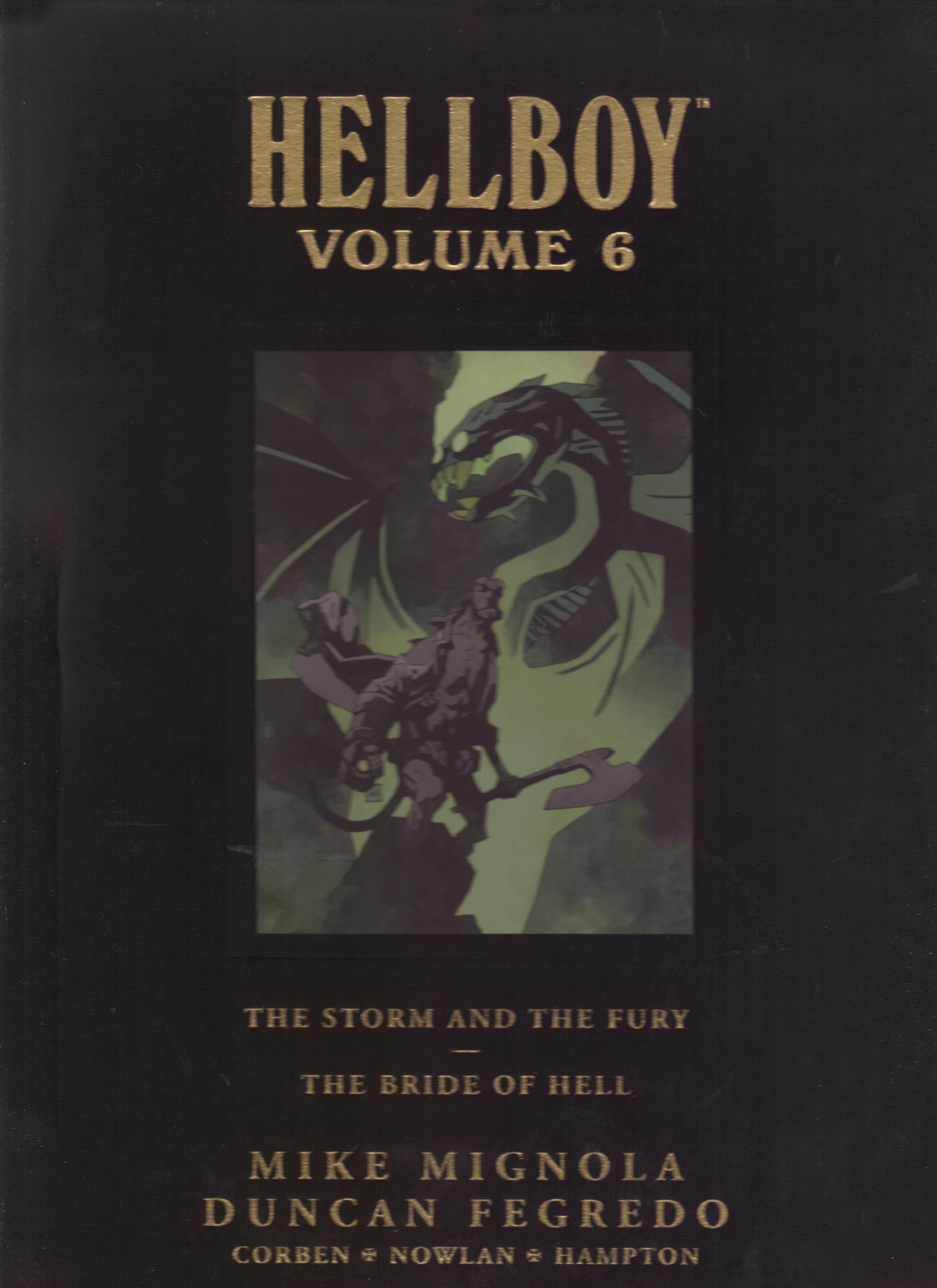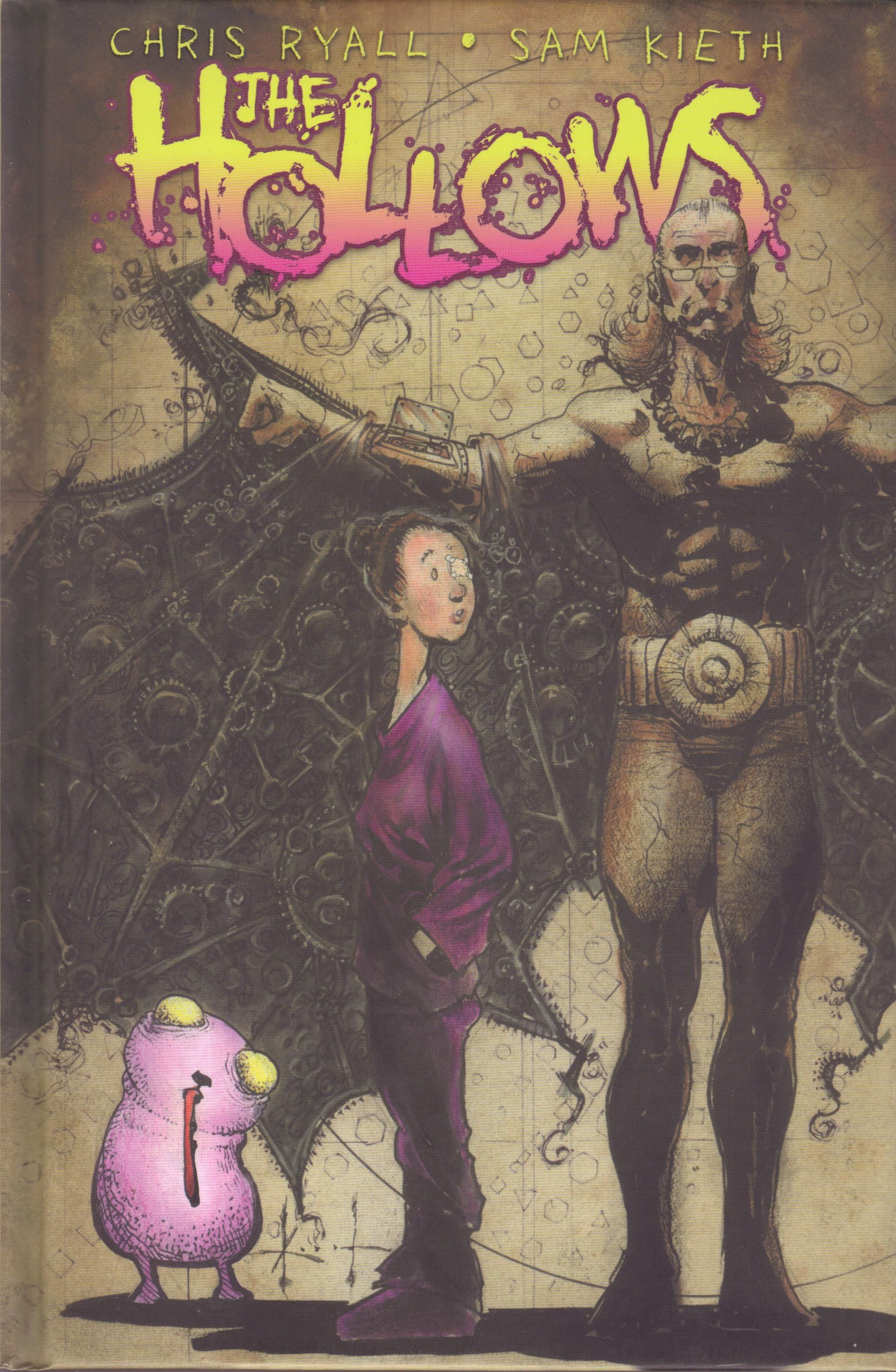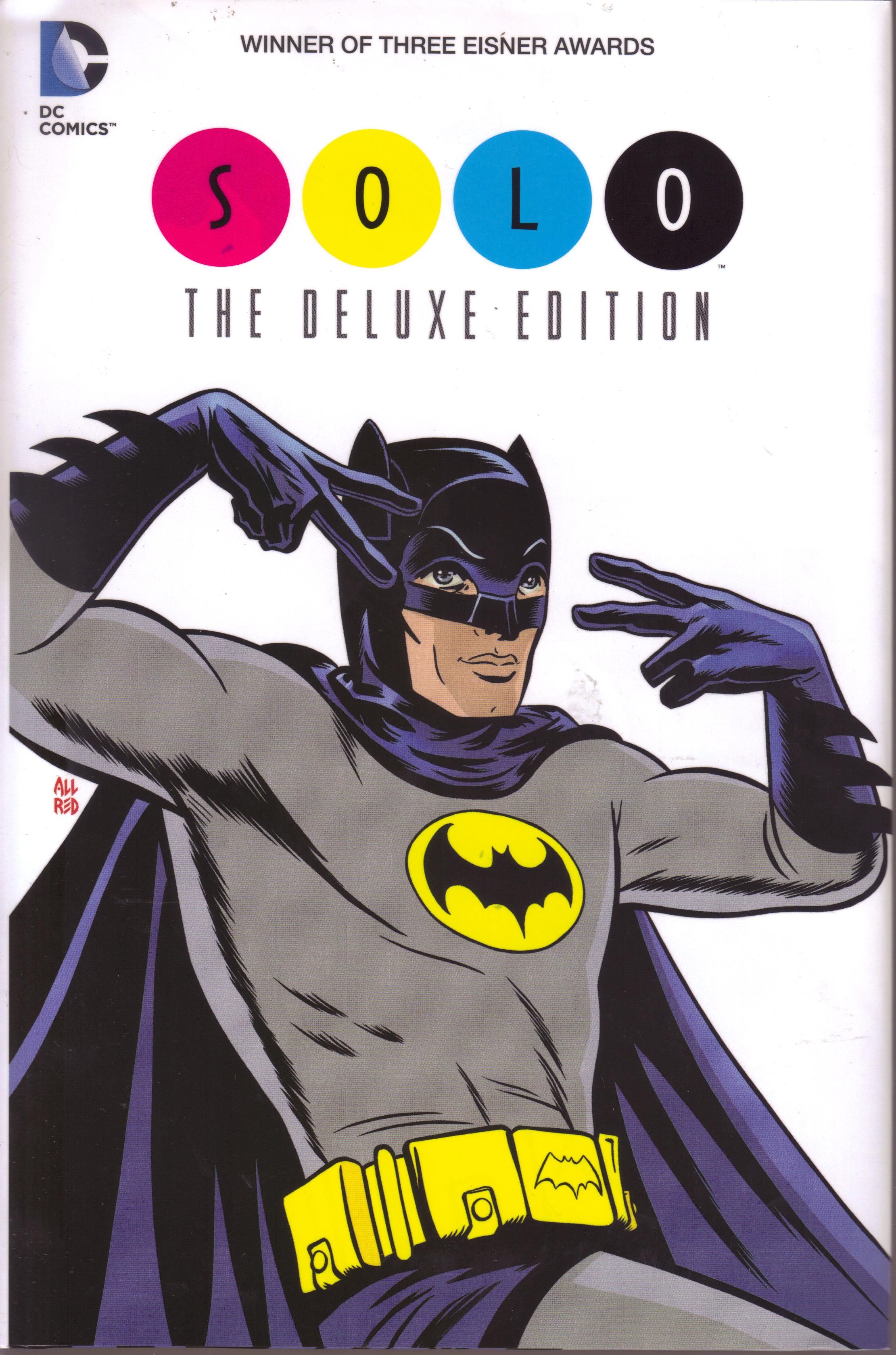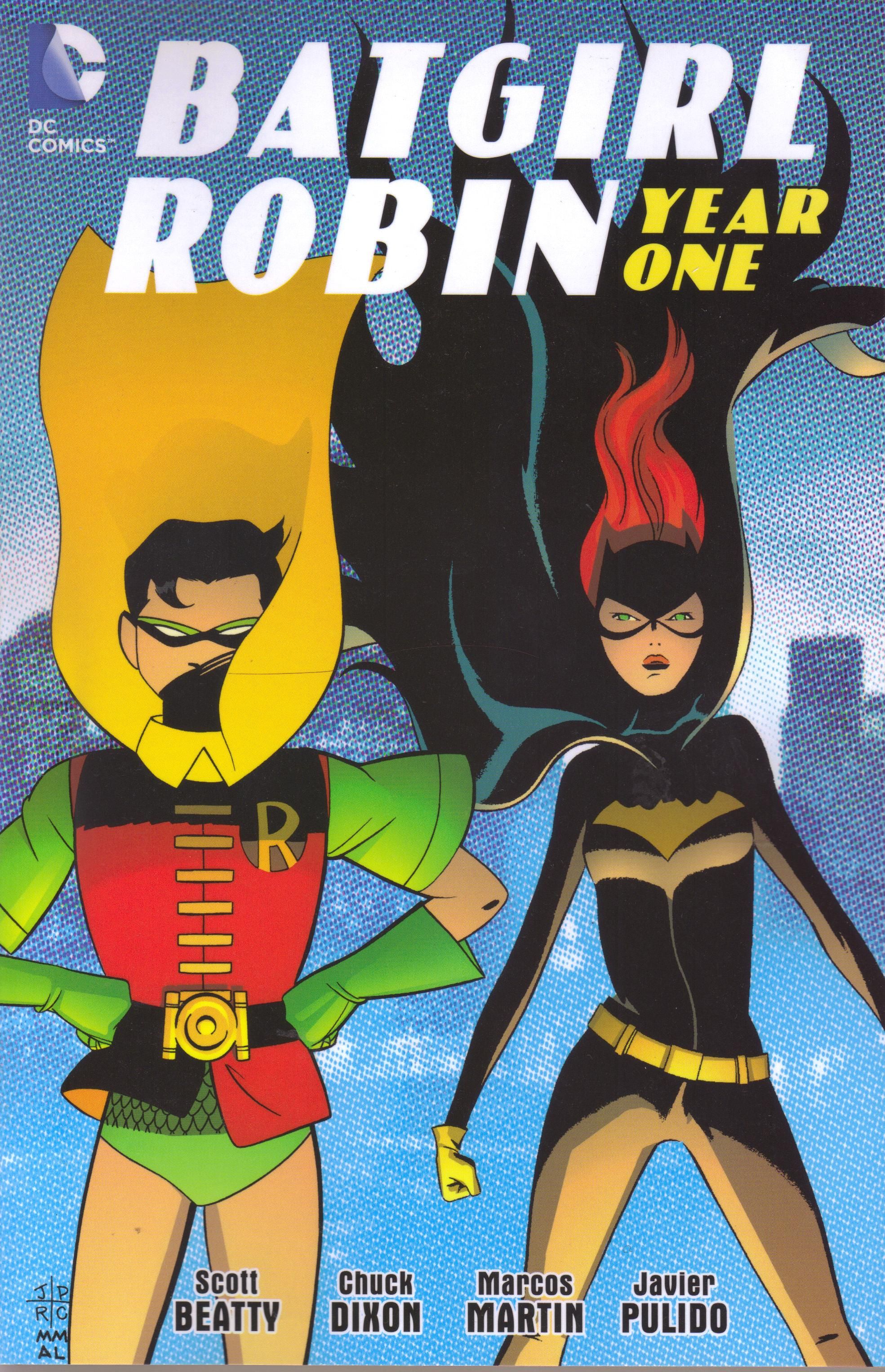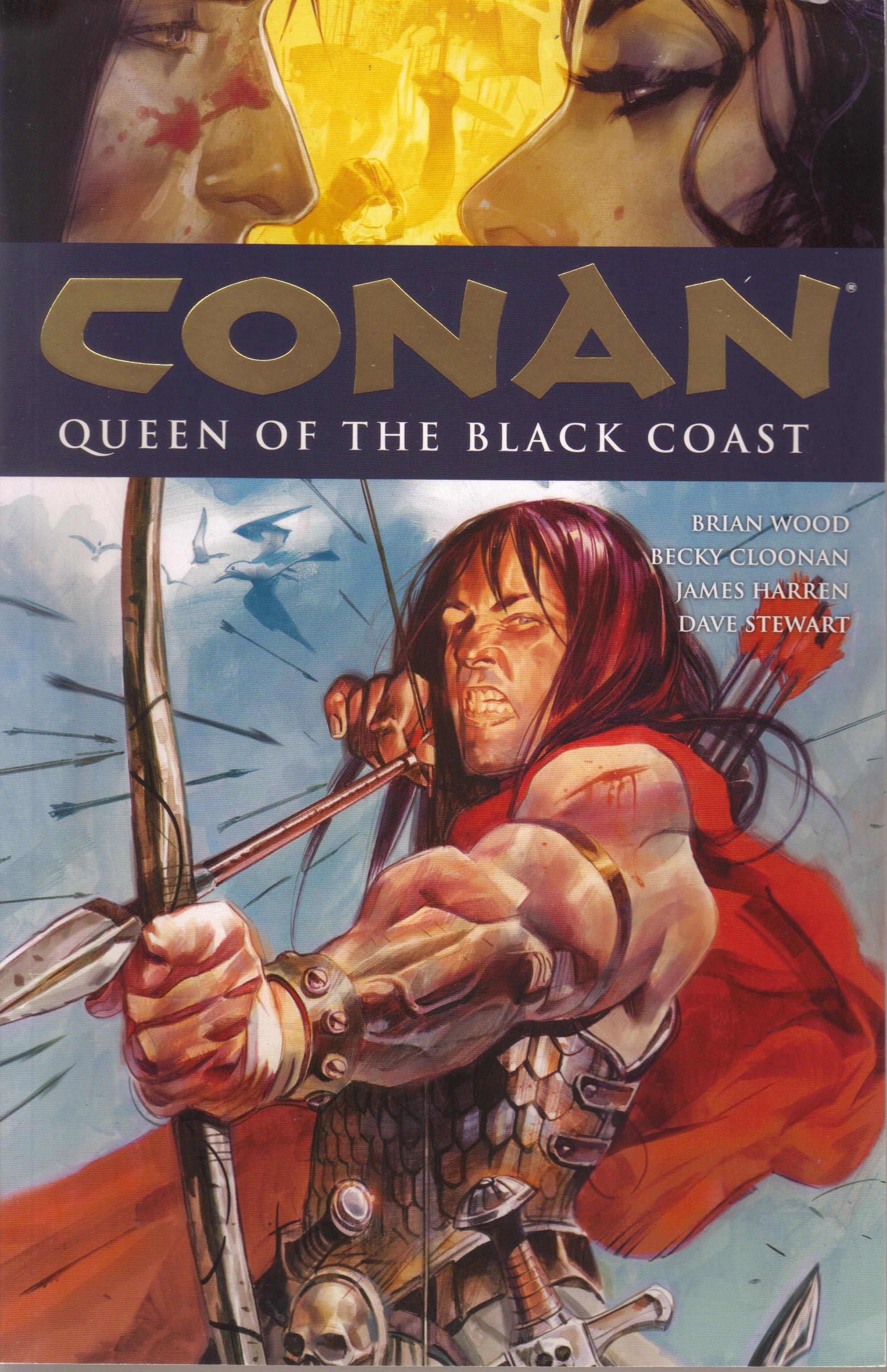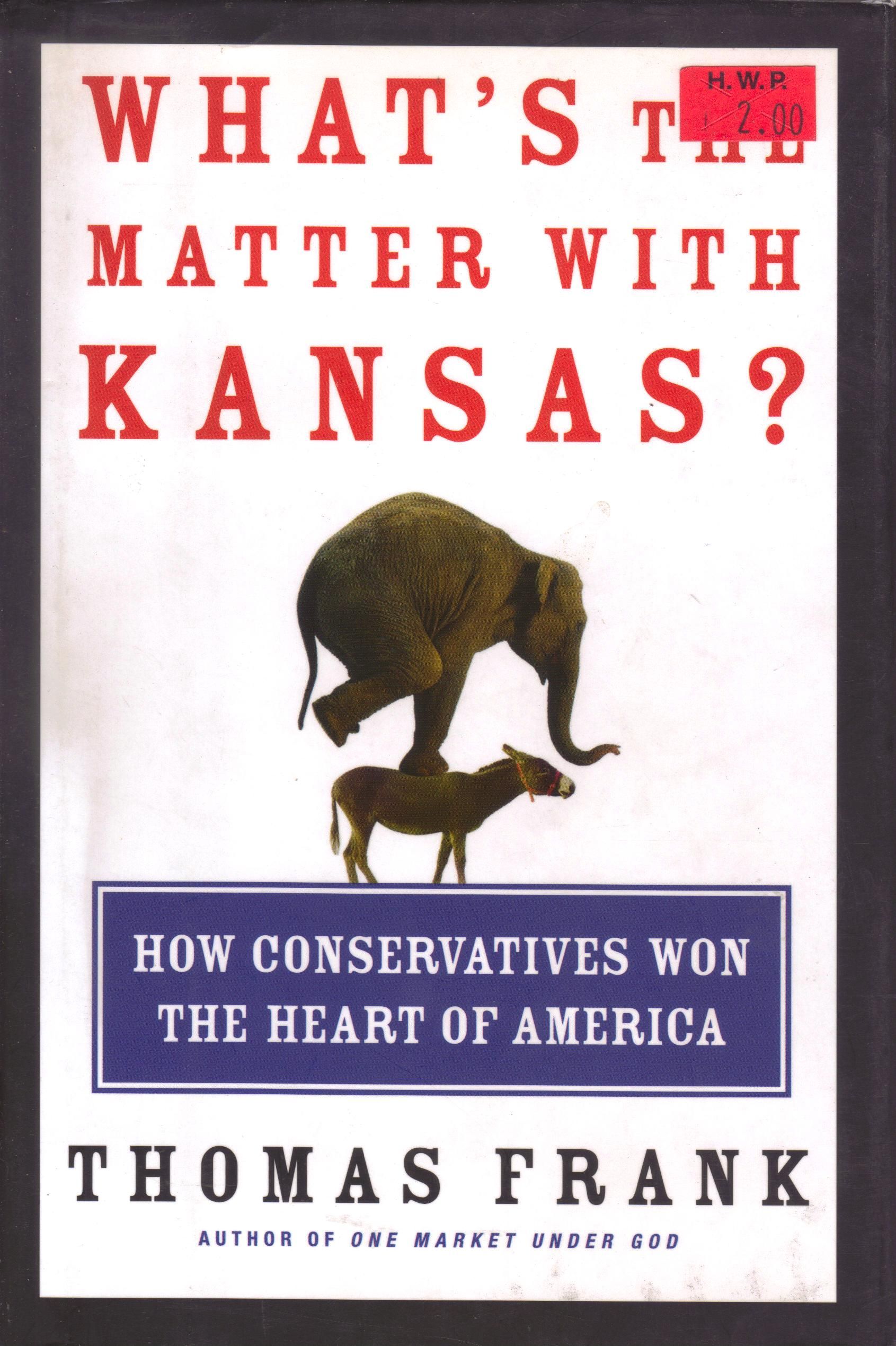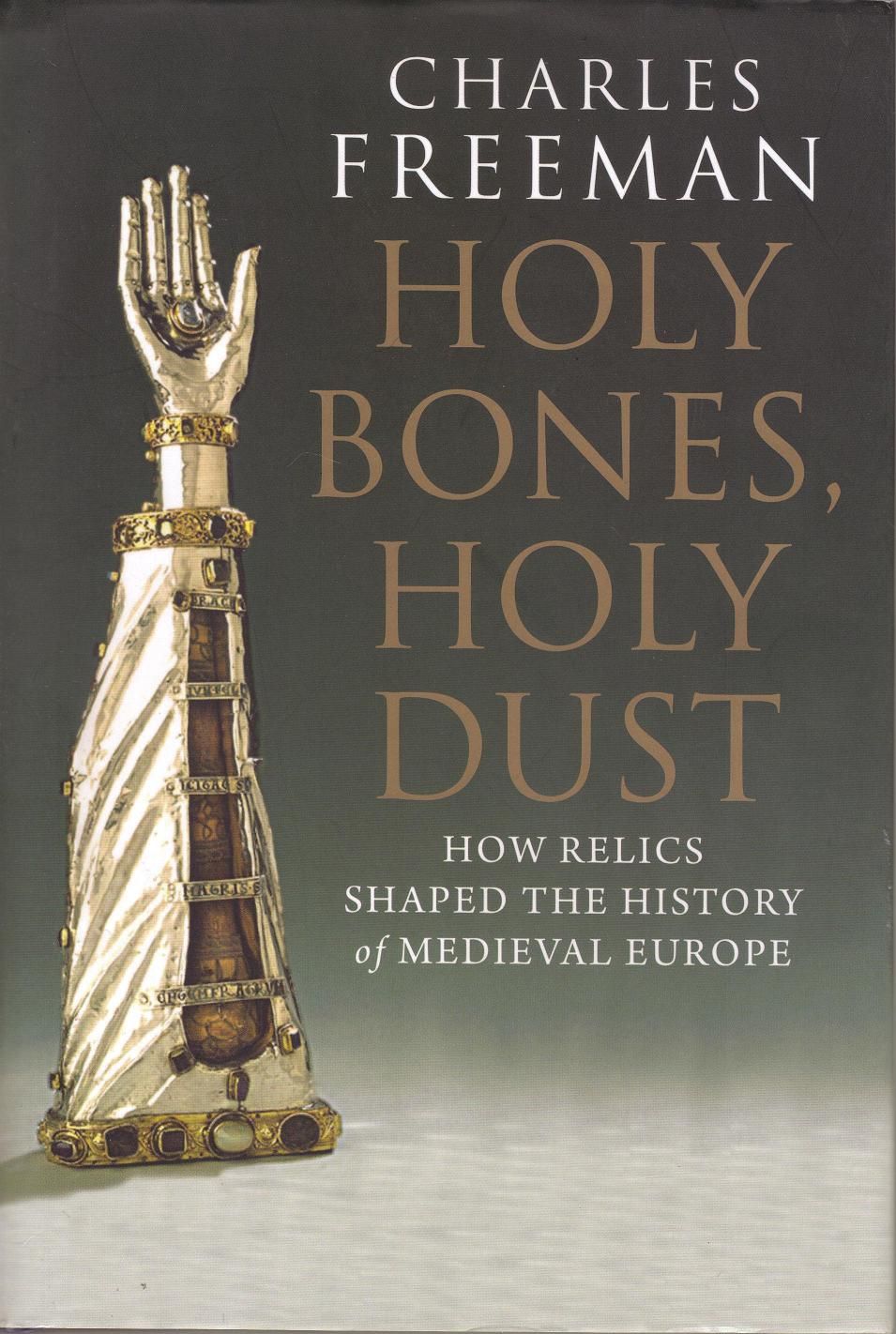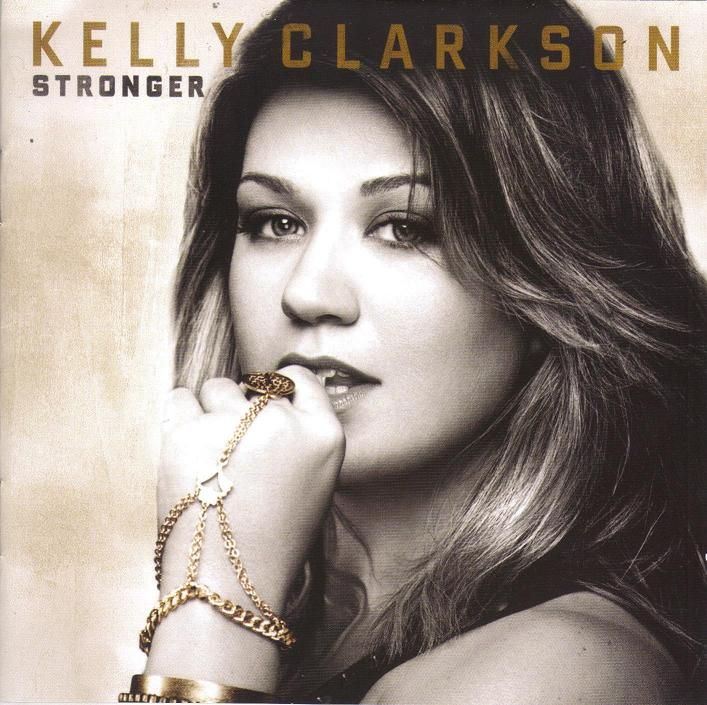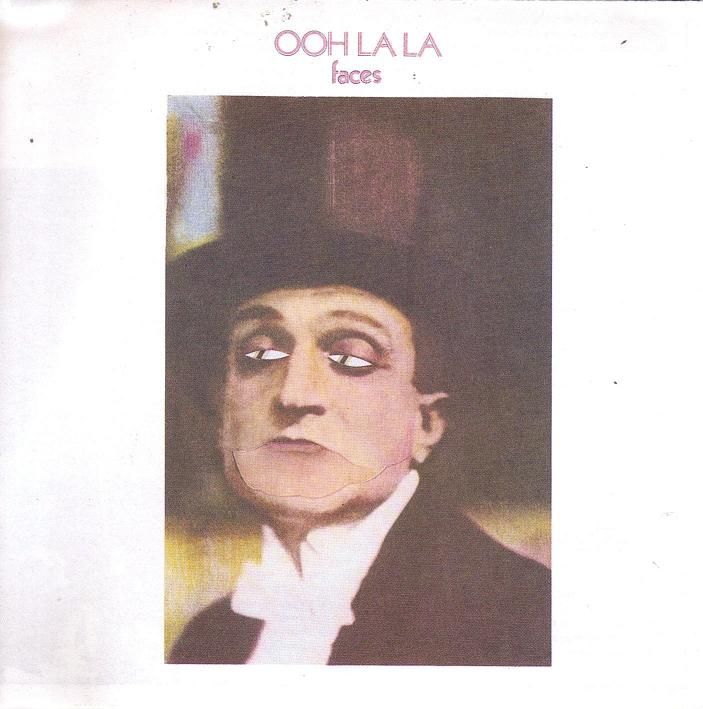"I see how they run through the tall grass, / With such thoughtless minds, I wish I was thoughtless too"
Batman and Robin volume 1: Born to Kill by Peter J. Tomasi (writer), Patrick Gleason (penciller), Mick Gray (inker), Guy Major (inker), John Kalisz (colorist), Patrick Brosseau (letterer), and Peter Hamboussi. (editor). Batman and James Gordon created by Bill Finger and Bob Kane. Alfred Pennyworth created by Jerry Robinson and Bob Kane. Damian Wayne created by Grant Morrison and Andy Kubert and (sort of) Mike W. Barr. Henri Ducard created by Sam Hamm and Denys Cowan. $16.99, 160 pgs, FC, DC.
"Born to Kill" really expresses all that's annoying about the DCnU, doesn't it? It's so perfect.
That's not to say this is a bad comic. It's pretty decent, and less blood-soaked than you might expect, although I suppose that's partly due to me lowering my expectations, so when a comic like this, which is just somewhat blood-soaked, comes along, I'm impressed. It's helped a great deal by the absolutely stunning artwork by Patrick Gleason, which is the perfect mix of cartoony and realistic so that the bloody parts don't become too awful. Tomasi's story is just okay, hampered by knowledge of how superhero comics and even other fiction works, as he can't escape some of the clichés of the action/adventure genre. This is akin to a slightly more thoughtful popcorn movie, but it's still a popcorn movie. If that's your thing.
Tomasi does give us a pretty cool villain - Nobody, who turns out to be Morgan, the son of Henri Ducard, one of Bruce Wayne's trainers as he was traveling around the world gaining Batman skillz (a much douchier Henri Ducard, it must be noted, than the original, who was already pretty douchey). Morgan has one of those "I hate Batman" schemes - he believes that his dad was disappointed in him because Bruce Wayne was a better fighter than he, Morgan, was, so he decides to take Batman's son away just like Bruce Wayne took his dad away. To do this, he trots out the whole "Life would be so much better if you killed bad guys" trope and seduces Damian with it, as Tomasi shows that Damian is fairly sympathetic to this line of reasoning anyway. Damian joins Morgan, and Batman has to save his son before he goes ... too far!!!! As stories go, it's fairly claustrophobic, as Morgan really doesn't have any bigger scheme than that, but while it's a bit padded for 8 issues, it's still pretty decent.
The problem with it is that in the context of a well-known mainstream superhero comic, it doesn't work. Although Damian is a douchebag, there's no way DC would allow him to become a killer - they tried making another Robin sort-of a killer ("He slipped!") and that got them a call-in poll where the readers themselves wanted him gone. So there's absolutely no dramatic tension when Damian goes over to Morgan's side - we know it's either a big ploy by Damian in conjunction with Bruce or on his own OR he'll back out at the last second. The scene where Morgan gives him a gun to "prove" that he's on Morgan's side is something we've seen hundreds of times, and it's not surprising when Damian explains what happens. Tomasi doesn't want the Nobody story to be the main focus, as he wants the relationship between Bruce and Damian to take center stage, but that relationship and the way Tomasi builds it isn't quite good enough to take the focus off of the villain part of the tale. It's not a bad idea, of course, but because we know that Damian is going to be Robin and not completely turn to the dark side, it's a bit weaker than it could have been. The climax is a bit of a twist, but even that is understandable and doesn't really make Damian a "bad guy" - he's confused, sure, and doesn't know how else to deal with what's happened, but it's not as shocking as Tomasi wants it to be. It's kind of like the new Superman movie - I've read a few people who talk about how good it is as a movie, but not as a Superman movie, because Superman is essentially unrecognizable. Within the context of Batman and Robin, there's nothing Tomasi can do about it. He tries, but the reader's expectations weigh him down, and that's too bad. It's why stories like this don't and really can't work in this kind of context. It's a noble effort, but that's about it.
However, Gleason's art makes up for it. I'm impressed that Gleason pencilled all 8 issues of this collection, as he never struck me as too fast an artist, but the work here is strong throughout. While it's a bit padded with splash pages (a symptom of far too many superhero comics these days), Gleason's splashes are something to behold, and there are a lot of pages with a lot more panels than you might expect, all with strong storytelling. Gleason's design for Nobody is excellent, as Morgan wears a creepy latex outfit with a many-eyed helmet, making him look like a spider. He uses some very cool camera angles to help make the book a bit vertiginous and kinetic, and the final fight between Batman and Nobody is a horrifically brutal affair, which Gleason nails beautifully. Gray and Major's inking (Major is usually a colorist, but he's listed as an inker here, which, I admit, might be a typo?) is great, as the book is very dark but their lines don't bludgeon Gleason's detailed but somewhat delicate line. Gray has been inking Gleason for quite some time, and they have a very good symmetry, as Gray seems to give Gleason's slightly cartoony faces some gravitas. It's a gorgeous book, and it helps make Tomasi's story feel more important.
While this volume is hemmed in by what a mainstream superhero book is allowed to do, it's not a terrible comic. It looks great, it's exciting, and Tomasi does try to explore the difficult relationship between Bruce and his son. There's a lot to like about the first volume of Batman and Robin, even though the better story that seems to lurk beneath its surface would be nicer to read.
Rating: ★ ★ ★ ★ ★ ★ ★ ☆ ☆ ☆
Doctor Atlantis volume 2 by Ian Ally-Seals (writer) and Carl Mefferd (artist). $9.99, 82 pgs, BW, Rare Earth Comics.
Doctor Atlantis is a nifty little comic from Ally-Seals, in which a late Victorian doctor, Julius Fowler, roams the world in his super-steampunk ship, the Atlantis, having adventures. Obviously, there's nothing terribly original about the comic, but with comics like this, it's really more about the way it's told and how it looks. In the first volume, Fowler found a boy in a canoe, and after rescuing him, saved his people from a gang of marauding slavers. He and Chosot (the boy) took the people on board and began looking for their home island, but before they could find it, they were confronted by a giant sea monster, which is where the book ended. So they fight the monster and defeat it, but are immediately attacked by the British navy, from whom Fowler "stole" the Atlantis - he designed it, but when the commanding officer, Captain Cumberland, orders the slaughter of some natives, Fowler absconded with the ship. The rest of the book is the fight between Fowler and the native crew and the British. You get absolutely no credit for figuring out who wins.
There's a slight feeling of "White Man's Burden" about the book, which is probably unavoidable when you're writing about a British hero and natives, but Ally-Seals does try to get around it by making Chosot a pretty good character who saves Fowler's bacon a few times and by giving some of the natives interesting and different personalities. It's not perfect, but because writers these days are more aware of this sort of thing, they can mitigate it somewhat. Where Ally-Seals really excels is in the cat-and-mouse game on board the Atlantis between the British and Fowler - it's well done and tensely plotted, leading to another battle with another giant monster. The book isn't really about the characters all that much - Ally-Seals gives them some personality, but at this point he's more interested in spectacle - so it's basically how much Ally-Seals can astonish the reader. He does a pretty good job.
He's helped by Mefferd, who's a pretty good artist. His detailed work is intricate, as befits a steampunkish universe, and the Atlantis is a nicely designed ship. He helps Ally-Seals out on character development by making the people interesting to look at and very expressive, which is nice. He does a very nice job with the monsters in the book, as they're huge and impressive but not so big they don't fit onto the page and we lose sight of their shape and impact. The "money shot" toward the end of the book really does work excellently, making the final battle quite epic. Mefferd's cartoony style means that the steampunk aspects of the book don't overwhelm the human story or the giant monsters, and it's a good blend.
It appears Doctor Atlantis might be on hiatus, but I wouldn't be adverse to these creators cranking out some more stories of Dr. Fowler and Chosot, because there's always adventure to be had! Doctor Atlantis isn't the greatest comic, but it's entertaining. Plus, giant sea monsters!
Rating: ★ ★ ★ ★ ★ ★ ☆ ☆ ☆ ☆
Hellboy Library Edition volume 6 by Mike Mignola (writer/artist), Duncan Fegredo (artist), Richard Corben (artist), Kevin Nowlan (artist/colorist/letterer), Scott Hampton (artist), Dave Stewart (colorist), Clem Robins (letterer), and Scott Allie (editor). $49.99, 423 pgs, FC, Dark Horse.
I love reading Hellboy in giant-sized chunks - in fact, before reading this volume, I went back and read the entire Hellboy epic, and man, those are some good comics. The Library Editions are cool because they include odds 'n' ends from all over, so after The Storm and The Fury, the two mini-series that concluded this portion of Hellboy's journey, we get a bunch of short stories, including one that was published on-line in USA Today.
Everyone who's interested probably already knows how this ends, as Hellboy is finally confronted with his destiny and needs to figure out what he's going to do about it. The fifth Library Edition began this epic, and in this volume, it seems that Hellboy has finally accepted that he's the true king of Britain ... but then he decides that he's still not going to do what others want of him. Instead of taking an army off to fight Nimue (who has become a war goddess), he goes alone, and leaves Excalibur behind. This is typical of Hellboy, and it's pretty cool how Mignola manages to make us believe he's really going to become the king and lead the army before he changes his mind. Hellboy always does his own thing, so we might expect him to battle Nimue alone, but Mignola does a nice job showing how hard it is for him. Nimue, of course, is connected to Ogdru Jahad, the great dragon that's the main enemy of Hellboy comics. Mignola actually does a fine job tying a bunch of earlier plot threads up in this epic - he mentions that Gruagach (the fairy in the body of the pig) was supposed to be a one-off character in The Corpse, but Mignola kept bringing him back, making him more and more important - and in this volume Baba Yaga comes to collect a debt and King Vold shows up briefly. It's a terrifically tense story, as Hellboy finally fights the dragon and a lot of characters die. It doesn't make too much sense if you haven't read Hellboy up until this story, but I wonder if that hypothetical reader exists.
The stories included in the volume after the end of the main epic are typical Hellboy short stories, with your standard creepy stuff and our hero being the working class no-bullshit kind of dude who deals with it. Richard Corben returns to the Hellboy Universe with a Mexican wrestler story, a tale about an evil house, a story about a dude who worships the wrong Egyptian god, and a story about a fairly sympathetic demon; Scott Hampton paints a story about a creepy European-style vampire and what he might be scared of; and Kevin Nowlan draws a Hellboy-meets-aliens story. They're all rather fun, as Mignola tends to show his morbid sense of humor in the short stories instead of the epic main storyline.
Fegredo is stunning on the book, too - he's more detailed than Mignola, so while Mignola always gets the weirdness of Hellboy's world down pat, Fegredo seems to do better at placing Hellboy in specific places better. Fegredo and Stewart are wonderful depicting the fight between Hellboy and Nimue, which begins toward the end of "Chapter Four" (The Fury #1) and lasts until well into "Chapter Six," as the cut away to track what's happening with Alice, Hellboy's love interest and key player in her own right. The fight is brutal and spectacular, and unlike so many superhero battles, it feels more real, as if Hellboy and Nimue are doing real damage to each other and their environment. It makes the ending so much more bittersweet, even though we know that Mignola has more of the story to tell. I love Mignola's art, but Fegredo really nails this entire, 20-issue epic perfectly, and I'm glad they were able to get him on board.
This certainly isn't the place to start reading Hellboy, but if you've been reading along, this is a superb culmination of well over a decade of stories, and as usual, the presentation - a giant hardcover, with lots of sketches and commentary in the back - is well worth the price. It's going to be a while before there's enough material for another Library Edition, but I'm already ready for it!
Rating: ★ ★ ★ ★ ★ ★ ★ ★ ½ ☆
The Hollows by Chris Ryall (writer), Sam Kieth (artist), Robbie Robbins (letterer), Justin Eisinger (editor), and Alonzo Simon (editor). $21.99, 88 pgs, FC, IDW.
I picked up The Hollows mainly on the strength of Kieth's art - Kieth isn't always great, because sometimes he seems to phone it in a bit (and it seems completely random, like half an issue might be that way while the other half might be stunning), but he's usually reliable to give you a pretty cool-looking comic, and The Hollows is on the better side of his work. He designs an odd, post-apocalyptic world in which the rich live on cities built on giant trees while the poor are stuck on the ground, living among "hollows" - "radioactive husks" that suck the life-energy out of the people they can reach. Kieth gives us odd people - Kieth always makes his people slightly strange-looking, so when he concentrates on a beautiful person like the main character's wife, she stands out more - and creepy "hollows" to go along with the delicately beautiful cities in the trees and the blasted ground. He loves trying different ways to lay out a page, so we get his rounded panels, tilted panels, and panels overlaid on the main image, all to create a nice mixture of balanced storytelling with some vertiginous elements. Kieth's oddball sense of humor is present throughout the book, as he creates a weird creature that lives with the survivors on the ground and he adds unnecessary but fun instructions about some of the visuals in the book. His rough line and delicate paint job provides an interesting contrast between the cultures, as the trees are very much reminiscent of Japanese nature paintings while the hollows and the refugees living on the ground are much more scratchy. As with a lot of latter-day Kieth, there is some sloppiness, but it seems more deliberate than in some of his other work.
Unfortunately, Ryall's story doesn't quite measure up to the artwork. The basic idea is a standard post-apocalyptic set-up, as the "best and brightest" got to move into the trees to escape the dying world. Craig Mayerik, a scientist working in the trees (although it's never quite clear what he's working on - presumably some way to cleanse the world so everyone can move out of the trees) has built some nifty clockwork wings that he uses to zip around, and one day he flies too close to the ground and crashes. He meets some refugees who obviously think he's a bit of a jerk for abandoning the world. He befriends a girl, Lani, and tells her he'll try to help them, but they don't believe him. He builds a weapon to hold off the hollows, but soon enough, he has bigger problems, as the hollows begin to attack the trees, which were supposed to be impregnable. So Craig needs to save his wife, Eiko, and his kids.
It's a fairly dull action/adventure, with the reader discovering some standard dark secrets about Craig along the way, and Ryall just moves us from Point A to Point B without a lot of verve. We can see pretty much every plot twist coming, including who's doomed and who's not, and while the ending might be a bit surprising, that's because it makes very little sense. It's only a 4-issue mini-series, I get that, but perhaps Ryall didn't need to try to be so ambitious, as the book ends with a lot of questions yet there doesn't seem to be a place for a sequel to go. Ryall doesn't spend much time on the characters, even Craig, so it's hard to care about any of them. Ultimately, the reason to buy this book is to see what Kieth does with Ryall's ideas about the future society. Even though Kieth does some nice things with them, it's not enough.
It's too bad - Kieth does some oddball comics these days, and it's been a while since he did something really stellar. I'd love for him to do something else great. We shall see, shan't we?
Rating: ★ ★ ★ ★ ★ ½ ☆ ☆ ☆ ☆
Solo: The Deluxe Edition by 12 artists and some writers, colorists, and letterers. $49.99, 575 pgs, FC, DC.
I'm not really sure what to say about this. Editor Mark Chiarello, who unfortunately edited some of the Before Watchmen stuff (boo!), often comes up with fascinating ideas, and while we can get annoyed with him for BW, we can appreciate him for Batman: Black and White, Wednesday Comics, and this series, all of which he created. This is the kind of comics we occasionally get from the Big Two, and we have to appreciate them while we can, because they never last, but at least they exist. So Chiarello decided to give a single artist 48 pages to basically do whatever they liked (presumably porn was off the table, or else who knows what Howard Chaykin would have done!). Some of them used writers for a few of the stories, some of them did more DC superhero stuff, some of them - Brendan McCarthy - did 48 pages of insanity, but they're all pretty amazing. This series came out in 2004-2006, and even though I had gotten more interested in art by then, I wasn't as keen on seeing different artists' style as I am now, so I didn't buy every issue. When you get them all together, in a beautiful hardcover (which, if I recall correctly, is slightly cheaper than buying 12 single issues, as I'm pretty sure they were 5 bucks a pop), it's simply amazing to look at. Here's the lineup: Tim Sale, Richard Corben, Paul Pope, Howard Chaykin, Darwyn Cooke, Jordi Bernet, Mike Allred, Teddy Kristiansen, Scott Hampton, Damion Scott, Sergio Aragonés, and Brendan McCarthy. I honestly don't know what else to say if that doesn't convince you to pick this book up. All the artists experiment a bit with their styles (some more, some less), and we get some superhero stories, but also a wide variety of other things, too. Sale does a story in haunting watercolor; Corben experiments with computer-generated drawings; Pope does a Kirby tribute and a wacked-out Batman story; Chaykin does his usual twisted romance and nostalgia-tinged stuff, but also a nice, personal story to finish his issue; Cooke does all sorts of different styles, including a two-page "funny pages" riff on things you'd find in a newspaper, all with a Slam Bradley framing story; Bernet does some cool horror and stylish 1950s stories; Allred goes nuts with his 1960s "pop art" thing (including a story about why Batman shouldn't be so dark 'n' gritty); Kristiansen's haunting, sparse style is perfect for a Deadman story (written by Neil Gaiman) and stories set in the past; Hampton gives us some nice painted stuff and also some cheery shots at the comic book industry; Scott draws his comics like graffiti, and while he admits it can be hard to read, it's also extremely immersive and lush, giving us an amazing reading experience; Aragonés is, well, Aragonés - a superb storyteller and very funny dude, and he includes the tale about how he killed Marty Feldman, so there's that (note: he didn't really kill Marty Feldman); McCarthy, unsurprisingly, gives us a head-trip into a bizarre and fantastical world that includes a weird Flash and the greatest Batman story never told.
Batman is a constant presence in the book - I guess no matter how idiosyncratic or iconoclastic you are, you just can't get away from Batman! It's a really fun book to read, seeing how these artists interpret some of the DC icons and how different their art can look when they experiment a little. I really can't recommend this book enough. Go get it!
Rating: ★ ★ ★ ★ ★ ★ ★ ★ ★ ½
Batgirl/Robin: Year One by Chuck Dixon (writer), Scott Beatty (writer), Marcos Martin (penciller), Javier Pulido (penciller), Robert Campanella (inker), Alvaro Lopez (inker), Lee Loughridge (colorist), Javier Rodriguez (colorist), Sean Konot (letterer), Willie Schubert (letterer), and Robin Wildman (editor). $24.99, 390 pgs, FC, DC. Batman, James Gordon, and the Mad Hatter created by Bill Finger and Bob Kane. Alfred Pennyworth created by Jerry Robinson and Bob Kane. Robin (Dick Grayson) created by Bill Finger, Jerry Robinson, and Bob Kane. Barbara Gordon and Blockbuster created by Gardner Fox and Carmine Infantino. Harvey Dent created by Bob Kane. Killer Moth created by Bill Finger, Dick Sprang, and Lew Schwartz. Firefly created by France Herron and Dick Sprang. Mr. Freeze created by Bob Kane, David Wood, and Sheldon Moldoff. Jason Bard created by Frank Robbins. Black Canary created by Robert Kanigher and Carmine Infantino. Green Arrow created by Mort Weisinger and George Papp.
I should point out that this trade is a phenomenal value - it's basically 17 issues for 25 dollars, as the four issues of Robin: Year One are 48 pages each. DC does this really well - they price their trades excellently, which makes me wonder why they don't clear out some of their old backlog even more, because they're priced to move!
Of course, we have to consider whether the books are any good, but in this case, both of these series are quite good. Dixon and Beatty are solid superhero writers (Dixon was in the middle of a long run on Robin at this time, if I remember the dates correctly, and it's a very well-received run), and both Pulido and Martin are excellent artists (Pulido and Martin share the pencilling duties on Robin: Year One, and Martin goes solo on Batgirl: Year One), so the trade looks great. It's really uncanny how old-fashioned these series feel, even though they're less than 15 years old - the DCU became a bleaker place soon after Batgirl came out, and there's been a semi-reboot and a more complete reboot since they were published, so even though they're modern comics in many ways, they feel almost hopelessly naïve in some ways. It's part of their charm, actually.
Robin is the weaker of the two series, mainly because young teen Dick Grayson is a tough character to really get a handle on. When he was a young teen in "real time," he was pretty much a cheery, good-hearted, crazy kid who fought colorfully-clad villains and was never really in much danger (even in "Robin Dies at Dawn"!). By the time comics got more "mature," Dick Grayson was older and wiser, so other Robins took over as the young teen sidekick, and we never really got much of a sense of Dick Grayson as a 14-year-old. In this mini-series, Dixon and Beatty try to rectify that, but Dick's teenage rebellion feels more like Jason Todd, and Dick feels just off-model the entire time. There's nothing wrong with the story - Dixon and Beatty set up Dick's long-time rivalry with Harvey Dent well, and the story beats all work - but it does feel weird to see Dick Grayson rebelling so much against Batman. First he gets fired for disobeying him, then he joins a bunch of assassins, although he only commits some breaking and entering before he draws the line at murder. This is one of those comics where the weight of years works against it a bit - since the 1970s, Dick has been portrayed one way, and while on an intellectual level it's not surprising that Dick Grayson would be a bit rebellious when he was younger, it's harder to deal with when you see it actually happening. Or maybe that's just a "me" problem.
Dixon and Beatty do a better job with Barbara Gordon in Batgirl: Year One. Yes, she's rebellious, but she rebels against her father by dressing up as Batgirl (kind of accidentally), which dovetails into her second "career" as a costumed vigilante. Dixon uses Killer Moth and Firefly as his main villains (if I remember correctly, Dixon likes both of those villains, so it's not surprising they show up here, and I guess Killer Moth's scheme at the beginning of the series is pretty much what happened in the 1960s when Batgirl first appeared), and both are decent villains for Batgirl, because they're menacing enough that they can hold their own for a while against a new vigilante who's not quite sure what she's doing yet, but they're not quite good enough to challenge Batman, so their appearances going up against him tend to be brief. Dixon and Beatty do a nice job showing how Barbara decides to dress up as a bat-hero and why she keeps doing it, and they play up the romantic chemistry between Dick and Barbara. It's really a nice comic - we get to see Barbara grow into the role, use her brains, and learn how to fight better, while Dixon and Beatty keep Batman in the background but aware of what's going on. It's an exciting book, and while we get a bit of blood, the violence isn't egregious. Martin does an excellent job - his lines are a bit softer than Pulido's, which makes his work just a bit more fluid, and it really works well in this series. There are a few problems with the book, however. First of all, it's unclear how old Barbara is supposed to be. She's done with college, she still lives with her father, and she has a job. All well and good. But she does kiss Dick - or at least allow him to kiss her - and it's clear that Dick is still just a young teenager (this takes place about the same time as Robin: Year One, in fact, as Dixon and Beatty make clear in one scene), so I guess maybe she's just letting him have some fun. It's still a bit weird. Dixon and Beatty seem to write her as younger than a college graduate in some scenes, even as a 17- or 18-year-old, but then as a young woman in her twenties in other scenes. It's bizarre. There's also the fact that Batman reveals his secret identity to her at the end of the comic. I could have sworn I read somewhere that Barbara Gordon discovered it on her own, and Dixon and Beatty even hint that she's sussed it out in this series. If I'm wrong, then I guess the scene is a bit better, but if she did figure it out on her own and the writers retconned it, that's a bit sad. But it's just a minor point.
Anyway, this is a really nice trade of two good mini-series, so if you're looking for old-fashioned comics from this millennium, give it a look. You won't be disappointed!
Rating: ★ ★ ★ ★ ★ ★ ★ ★ ☆ ☆
Conan volume 13: Queen of the Black Coast by Brian Wood (writer), Becky Cloonan (artist), James Harren (artist), Dave Stewart (colorist), Richard Starkings (letterer), Jimmy Betancourt (letterer), Brendan Wright (associate editor), Shantel LaRocque (assistant editor), and Dave Marshall (editor). $19.99, 132 pgs, FC, Dark Horse. Conan and Bêlit created by Robert E. Howard.
Dark Horse renumbered Conan when Brian Wood came on board, but as we can see, this is "volume 13" - they're still continuing the story begun back when Busiek and Nord began their series, which is kind of nice. On the one hand, if you like Brian Wood (and Becky Cloonan, who didn't last too long on the book), you can start with a nice shiny #1, but if you've been reading Conan for a while, you know that they're still building on the previous issues - the end of volume 12 saw our favorite barbarian heading west toward the ocean, which is where he ends up in this book!
Wood does a pretty good job with Conan and his adventures on the high seas - this volume, obviously, introduces Bêlit to Conan's world, so Wood gets to write a nice romance between the two, which is at the heart of the book. There's plenty of violence, of course, but the book is really about the incredible passion both characters feel for each other, and how far they will go to be together. Conan is forced to leave Messantia, the capital of Argos, rather quickly, and he's taken aboard a merchant ship. The ship is eventually taken by Bêlit's pirates, but Conan is spared because he's so dreamy. He decides to head back to Messantia for revenge and booty, but his plan - to allow the soldiers to take him to prison as a distraction - seems to go wrong, and lots of people end up dying. In many ways, it's a typical Conan adventure. There's nothing wrong with that!
Wood does a nice job describing the passion the two characters have for each other, but I was a bit put off by his narration when Conan is in prison and thinks Bêlit has abandoned him and then when he's about to be hanged. This is the same Conan who has been having adventures for some time, and while he's still fairly young, Wood turns him a bit too emo for my tastes. I get that he doesn't want to be hanged because he'd rather die on the battlefield, slaughtering his foes, but he gets a bit whiny. I just don't believe that Conan would be in the "pits of despair," as Wood describes him at one point. Sure, Bêlit is all hot and shit, but Conan's not one to mope around in prison listening to Robert Smith just because his girl might have left him. If it were Conan's first foray out into the real world, maybe I could believe it, but he's a seasoned warrior by this time, and it just felt a bit off. Other than that, Wood does a nice job with the characters, and it's a solid plot for his first story arc.
Both Cloonan and Harren are fine artists, but I think Harren works a bit better for Conan (I know neither of them lasted long on the book, but for this arc, Harren works a bit better). Cloonan draws a better Bêlit - she's all slinky and exotic and dead sexy - but her Conan is too gangly and young-looking - again, if this were a younger Conan, he'd look fine, but he's been fighting for years, so he should look it. Harren gives him more muscles, although he doesn't go overboard, and his Messantia looks far more urban and decadent than the brief glimpses we get of it when Cloonan is drawing. Harren's violence is very, very violent, too - he and Stewart do an absolutely stunning job with the way Conan and others cut through the bad guys and how bloody it gets. Both artists have minor weaknesses, but the book still looks great.
I'm glad that Dark Horse continued the series with a more experienced Conan even though they rebooted the numbering, and it's cool to see Wood working on it. I've been a fan of Conan from Dark Horse since it began, and there's no reason to stop now!
Rating: ★ ★ ★ ★ ★ ★ ★ ☆ ☆ ☆
What's the Matter With Kansas?: How Conservatives Won the Heart of America by Thomas Frank. 306 pgs, Henry Holt and Company, LLC, 2004.
Frank's provocative and controversial book seems a bit tamer now, nine years after it was published, but I remember that it was somewhat incendiary when it first appeared. It's a weird book - at turns insightful and condescending, Frank gets at something in the zeitgeist that seems axiomatic today but I suppose was more surprising in the early years of the century - conservatives tended to vote against their economic interests. Frank's thesis is that the liberals in the country gave up on preaching a class conflict, allowing the conservatives to move in and seize the moral high ground on social issues, which turned the formerly radical "heartland" into a solid conservative voting bloc.
Frank grew up in Kansas, so the book is far better than one written by an ivory tower academic - Frank might qualify as one, but at least he can get on the ground and figure things out from there. He does a good job examining the history of Kansas's Republicans and seems quite prescient about some of the issues confronting the Republicans these days as the moderate wing of the party battles with the more radical elements - the party in Kansas went through something like that in the early 1990s, as Frank shows how many Republicans in the 1980s and early 1990s were, for instance, pro-choice. As the conservative wing of the Republican Party became stronger, they pushed many moderate Republicans out of office or radicalized them. Frank's writing about the rise of the conservative wing of the party and the way liberals have abandoned the idea of class struggle is well done - he points out Clinton's "New Democrats" as an example of the pro-business bent of the Democratic Party in the 1990s. Liberals, he argues, have left themselves vulnerable to social issues - abortion, for instance - because they have stopped hammering Republicans as the party of big business and shown the lower classes - and Kansas is full of struggling workers who vote Republican - that the conservatives don't have their best interests in mind. As Frank points out, conservatives in Kansas and other places rail against the immorality of Hollywood and then they vote to lower the taxes on the rich, including entertainers whose work disgusts them.
Even as he's discerning an interesting dichotomy in the voting of farmers and others who have been economically ruined by anti-union policies and deregulation (which are usually, but not always, championed by the Republicans), he turns his nose up a bit at the people even as he claims we shouldn't make fun of them. Frank appears to be a fairly old-school Marxist historian, and therefore doesn't seem to recognize that the people he believes are voting against their own interests might actually care more about social issues than economic issues. I'm not sure if that's true, but Frank doesn't seem to account for that. People often vote against their economic interests, and history is full of examples of it, yet Frank seems to think this is unique to the recent history of the "heartland." While he very cleverly points out the odd "victimization" that can occur in conservative circles, he misses the idea that perhaps the people voting these Republicans into office haven't been "fooled" as much as they simply don't care as much about their economic problems as they do about other things. Again, I'm not saying they are and Frank could be completely right, but he doesn't seem to consider any other reason that they are voting the way they are.
Obviously Frank couldn't see the future, and back in 2004, it was probably reasonable to believe that the Republicans might dominate politics for the foreseeable future, just as now it seems like the party is in some disarray. I doubt if Frank would say that liberals have seized back the economic high ground, as whenever anyone speaks of class differences, conservative rant about "class warfare" (something that Frank points out as well), but the recession has focused people back on economic problems, so perhaps Frank just missed the fact that the economic "good times" couldn't go on forever. He also ignores the fact that social issues can work both ways, so he doesn't anticipate liberals getting out to vote on social issues that are important to them. He's also only concerned, mainly, with white people (he mentions some black people, but they're fairly decorative in his narrative), and he doesn't seem aware of the fact that white people are losing ground as a majority, a trend that had to be evident in 2004. Perhaps that wouldn't change his thesis all that much (he veers toward discussing racism occasionally, so the idea of the "other" was on his mind), but perhaps it would have softened his dire outlook about the future a bit. Given that economics are his focus, probably not.
The book is dated but still interesting, even as Frank seems to disparage his subjects when he can. Unfortunately, as is the case with so many political/social/economic books, Frank is preaching to the choir. I can't imagine a conservative reading this book with an open mind or even at all (the title itself might put the hypothetical conservative off) just as I can't imagine a liberal reading something by Max Boot with an open mind. It's too bad, but there it is. Anyway, the most annoying thing about Frank's book is that he's right - Democrats have sold their soul to big business, and that's a damned shame.
Rating: ★ ★ ★ ★ ★ ★ ½ ☆ ☆ ☆
Holy Bones, Holy Dust: How Relics Shaped the History of Medieval Europe by Charles Freeman. 306 pgs, Yale University Press, 2011.
Freeman makes an interesting point in his book about holy relics: historians have generally ignored the actual history of relics, focusing instead on a particular relic as it impacts their bigger concerns of European history. Relics play a big part in histories of the Fourth Crusade, for instance, because Constantinople housed so many of them and the Crusaders looted it and disseminated the relics throughout western Europe. Freeman tries to remedy that with his history, which is very strong in some places and a bit weaker in others. If you've ever wondered what the heck was going on with relics and why medieval Europeans were so keen on them, this is a pretty good book.
Freeman specializes in ancient Greece and Rome, so this story might seem an odd choice for him, but such is the way of the freelance historian, and the early chapters of the book, in which he tracks the development of relics in the late Roman Empire, are strong, as he examines the martyrdom (or legends thereof) of several Christians and how someone like Ambrose of Milan (d. 397) would stage the finding of martyrs and their relics to enhance the status of his cathedral, something which became standard operating procedure for a millennium. Freeman points out that early Christian writers were sharply divided on the use of relics, some angrily condemning the practice of venerating relics. Two of the greatest early Christian writers, Jerome and Augustine of Hippo, were pro-relic, however, and that view prevailed. The battle for relics is a particularly fascinating section of the book.
Strangely enough, once Freeman dispenses with the straight history of the middle chapters and reaches the High Middle Ages, the book also improves ("strangely" because this isn't his area of expertise). His examination of the local practice of raising up a saint (a practice which continued for centuries, leading to a current list of saints, some of whom might not even have existed), which was eventually squelched by the Papacy, is very interesting, because local priests would use relics to assert their dominance over rival churches and villages. He even makes a case for one relic case exacerbating anti-Semitism in England. His main thesis is that relics allowed the people to feel closer to God and bound them to Catholicism, and so he claims that when Protestants began the process of getting rid of relics, they severed the connection of the common people to God and replaced it with only a Manichean view of God and the Devil, with nothing in between, which led to more extremism in religion. It's an interesting thesis. He also does a nice job with the Italian cities, where relics were an essential part of communal life - he traces the "relic clubs" that grew up in Venice, for example, and the processions they held on various saints' days. Freeman does a very nice painting a vibrant picture of late medieval life, in which the relics played a crucial part, acting as intermediaries for people who were intimidated by the bishops and archbishops of the aristocracy. Freeman gets into the fact that the relics were obviously faked, for the most part, but he makes the point that it was a way for people to make sense of their world.
Where the book is weakest is in the middle part, where he gets into the Dark Ages. He still does a good job tracking the relics, but his historiography is a bit sketchy and even disdainful. Once you know his focus - Roman history - it becomes clearer, as perhaps he's a bit prejudiced against the successor states to Rome, which were far less "civilized" than Rome itself, but while the historical record definitely has more gaps than for later in the medieval period, it's not a blank slate, and Freeman doesn't avail himself of some of the better sources. Personally, I wonder if his English background makes him more sympathetic to Bede and his history than Gregory of Tours and his history, but Gregory's - poor Latin aside - is as brilliant as Bede's, and a bit more cosmopolitan than Bede's more religious one. But that's just my prejudice as a student of medieval French history, I guess.
I wouldn't quite call this a "popular" history, as it's a bit too in-depth for that, but it's not quite a difficult scholarly work to slog through. If you've ever been fascinated by relics because it's just too much for your rational mind to wrap itself around, Freeman does a pretty good job getting into the psyches of people of the time and why they would believe in these (frankly, often gruesome) objects. I mean, who doesn't love reading about people venerating the breast milk of the Virgin Mary?
Rating: ★ ★ ★ ★ ★ ★ ★ ☆ ☆ ☆
Stronger by Kelly Clarkson, RCA Records, 2011.
This is the fourth Kelly Clarkson album that I have bought (I don't own her debut album), and it might be the last. It's not that it's bad, as Clarkson and her songwriting teams can crank out good pop songs all day, but that's pretty much all they do. Stronger has 13 tracks (with 4 bonus ones if you get the "deluxe edition"), and they're all pretty much the same - they're either songs about new love or dying love or some other kind of relationship drama. Now, if you're a songwriting genius like Stephin Merritt, you can write dozens and dozens of love songs (69 of them at least!) and you can keep them fresh. Clarkson and her writers are not geniuses, unfortunately.
The album is front-loaded, too. The first three tracks are by far the best, and as it turns out, they're the three singles: "Mr. Know It All," "What Doesn't Kill You (Stronger)", and "Dark Side." These songs are very good - the first song has a nice funky beat and Clarkson sells the poignancy of the lyrics - lyrics in pop songs are rarely that memorable, so it's all about inflection, and Clarkson is usually pretty good at that sort of thing. "What Doesn't Kill You" has a good driving disco beat, and Clarkson's alto adds heft to the empowerment theme of the lyrics. "Dark Side" is another typical yet typically strong Clarkson tune, with more introspective lyrics and a yearning for honesty in love. The rest of the album is fairly forgettable, as Clarkson riffs on those themes - she's either singing about trying harder to make a relationship work or singing about what a jerk the guy turned out to be. With the exception of "The War Is Over" (which takes advantage of her vocal range and has some strong lyrics and music) and "Let Me Down" (which is a bit edgier musically than usual for Clarkson), none of the songs really have the elements that make the first three strong songs, as Clarkson and her lyricists seem to get a bit too cute in some songs ("Einstein," "You Can't Win") or maudlin ("Standing in Front of You"). Occasionally Clarkson's vocals are a bit too breathy ("Honestly," which isn't a bad song) or timid ("Breaking Your Own Heart"). Even the music lets her down sometimes, as in songs like "You Love Me" or "Hello," both which could be something that Heart recorded in 1985. Now, don't get me wrong - I know that Clarkson is a pop artist, so she and the people who write her songs for her aren't interested in challenging anyone, but usually the songs have a bit more range - she seems to be sticking too much to her niche, and it's disappointing. When she and the team is on, they can write really good pop songs (and, as Dipper Pines says, "Top 40 hits are in the Top 40 for a reason - they're catchy!"), but it would be nice, if they're not going to release all of these as singles, for Clarkson et al. to do a song about, I don't know, eating Pop Rocks or fishin' on a lazy summer day or felching. You know, wholesome stuff. If you like Clarkson (and heck, I do - remember how many albums of hers I own???), you're probably just better off downloading the singles on iTunes. They're probably the best songs on the albums anyway.
Rating: ★ ★ ★ ★ ★ ½ ☆ ☆ ☆ ☆
Ooh La La by Faces, Warner Bros., 1973.
I'm woefully remiss about old rock and roll, as I own very little of it - all of Genesis, all of Zeppelin, some Stones, Who, Yes, Tull, and Floyd, and the random album here and there - but I've decided to try to remedy that, and a few months ago, the comments section got into a discussion of "Ooh La La" and my lack of Faces albums, so I bought this, their final album. What the heck, right? Over the years, I've gone from absolutely hating Rod Stewart to appreciating him more and more, so I figured this would be a better thing to buy now than it would have been 20 years ago. It's a short album, only about 30 minutes long, but the Faces manage to pack 10 songs into it, which fits right in with how long I believe albums should be (albums should be between 8-12 songs, in my humble opinion).
Most people have probably heard a lot of this album - it's been around for 40 years, after all - but the only song I'd ever heard was "Ooh La La," which remains the best song on the album. However, it starts off with the nice honky-tonk of "Silicone Grown," which is a very funny song about, well, breast implants (who knew that was a thing in 1973?). "Cindy Incidentally" is a slightly less raucous but still bluesy tune, and then the band shifts down again for "Flags and Banners," a melancholy Ronnie Lane song about loss, with Lane's more tremulous vocals providing a nice contrast to Rod Stewart's alcohol-and-cigarettes growl. Stewart is back on vocals for "My Fault" and "Borstal Boys," two more rollicking tunes with jumping piano parts. There's an instrumental, and then Ronnie Lane takes over songwriting duties. "If I'm On the Late Side" gives Stewart an opportunity to calm down a bit, singing about missing his girl at the train but promising to catch up with her later. Lane continues with the contemplative songs with "Glad and Sorry" and "Just Another Honky," the latter of which is a slowed-down honky-tonk Stewart-sung tune. "Ooh La La" gives the lead vocal to Ron Wood, which was uncommon for the Faces, but it works nicely - Wood kind of lands between Stewart's more aggressive growl and Lane's more even-handed approach, which is pretty good for this nostalgia-seeped tune. It's a brilliant song and it finishes a nice album. There's not really a clunker on the disc, although "Silicone Grown," "Cindy Incidentally," "Flags and Banners," and "Ooh La La" are definitely the highlights. (You can actually listen to the entire thing here, if you're so inclined.)
I'm not sure if I'm going to buy more Faces albums, but I certainly wouldn't be adverse to it. And now that you know my shameful secret about 1960s and 1970s music, I'll ask you - what should I buy now? As I mentioned, I own every Genesis and Zeppelin album, but other than that, let me know what I really ought to own from that era. I might already have it, but you'll probably have a pretty good chance of naming something I don't own! Let me know!
Rating: ★ ★ ★ ★ ★ ★ ★ ☆ ☆ ☆
Well, I have some trade paperbacks that I didn't get to this month (the ones I got last week, in fact), plus I have a bunch of other CDs I've bought recently that I haven't gotten to, either, but that just means July's post is going to be huge. Everyone loves huge posts, right? I hope everyone has a nice day!

